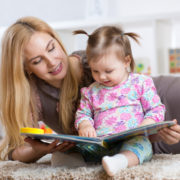Bedwetting Solutions for Your Kindergartener
Once you’ve gotten past one of the most difficult stages in early childhood development – potty training – you may find yourself facing something just as challenging – bedwetting. Nighttime involuntary urination usually becomes a concern around 5 or 6 years of age, often when children enter kindergarten. This is also an age when children can become embarrassed by the issue, and parents simply become exhausted with having to change the sheets every night.
Below are some bedwetting solutions that you can try to help your child stay dry throughout the night.
Adjust daily schedules.
Make sure your child urinates right before bedtime and on a regular basis throughout the day. Also, increasing your child’s fluid intake earlier in the day, and reducing it later in the day, can help decrease nighttime accidents.
Stay calm and reassure your child.
The worst thing to do in a bedwetting situation is to get angry and blame your child for the accident. This will just result in more anxiety and pressure for your child. Instead of making a big deal out of the issue, try comforting your child instead. Reassure him that bedwetting is very common among children his age, so he knows that he is not the only one going through this.
Check for constipation.
Your child’s bedwetting problems may stem from constipation since the bladder is located right in front of the rectum. Pay careful attention to your child’s bowel movements. If you notice that she isn’t going regularly, or that the stool is hard, encourage her to drink more fluids and increase her fiber intake. This will ease the constipation and get her system up and running again.
Try an alarm.
If all else fails, you can buy a moisture alarm and attach it to your child’s underwear. The alarm will go off the moment any moisture is detected, and your child will be woken up so that he can get up and go to the bathroom to finish urinating. The bedwetting alarm works best with children over the age of 7. Eventually, in about 12 weeks, your child should be conditioned to get up on his own to use the restroom during the night, or better yet, become able to make it until the morning.
Our approach at Parker-Chase:
At Parker-Chase Preschool, we strive to help each child develop cognitively, socially, emotionally, and academically. We understand that bedwetting is a part of growing up and that accidents at home or in school may make children feel insecure, especially at the kindergarten age. As loving educators, it is our goal to instill confidence and feelings of self-worth in each child. We work with parents to build self-esteem in our students, so bumps in the road like bedwetting can be handled together confidently.



